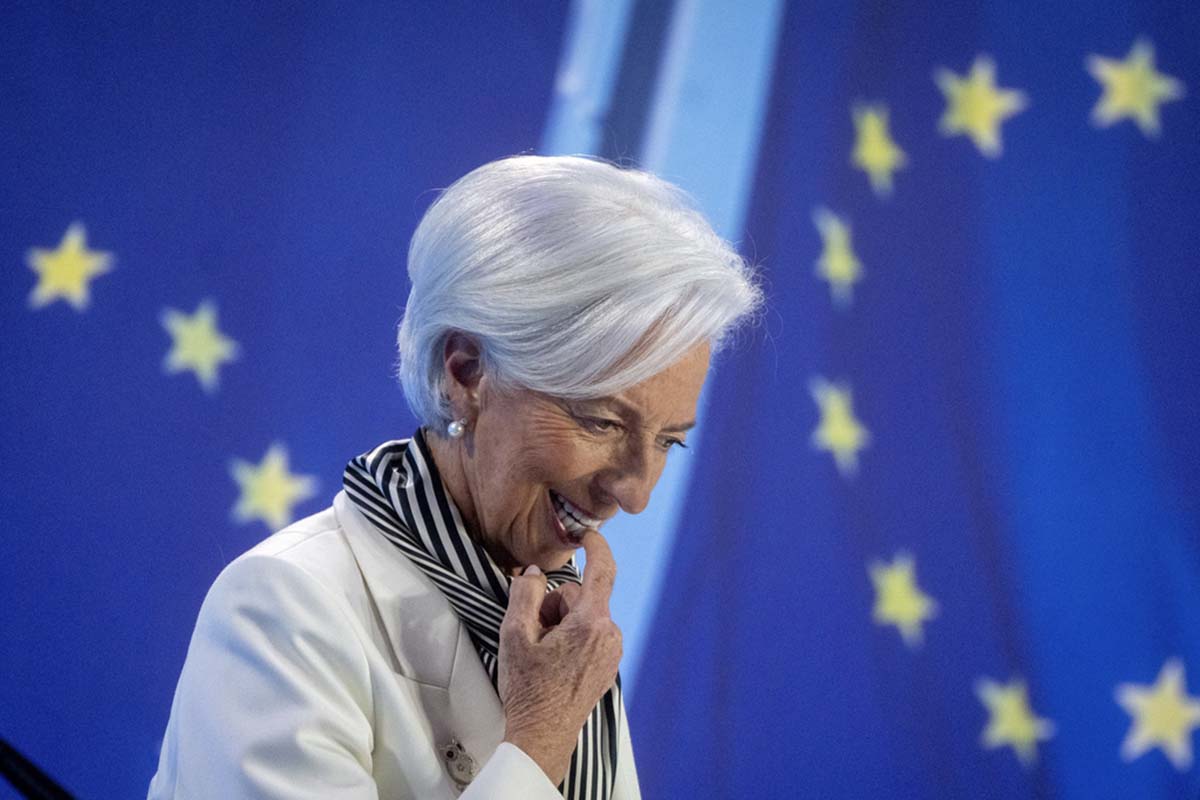
FRANKFURT, GERMANY: The European Central Bank plans to move ahead of the US Federal Reserve on Thursday in cutting interest rates, making the eurozone the biggest rich-world economy to start easing borrowing costs for businesses and consumers as the inflation that arose after Russia's full-scale invasion of Ukraine slowly recedes.
ECB President Christine Lagarde and other officials have made it clear that a quarter-point rate cut from the current record high of 4% is more than likely when the bank's 26-member governing council meets at the institution's skyscraper headquarters in Frankfurt, Germany.
Lagarde said late last month that she was "really confident" inflation was under control in the eurozone, the 20 European Union countries that use the euro currency and for which the ECB sets monetary policy. Her remark and statements by other ECB officials have analysts convinced that a rate cut is a done deal for Thursday.
Such a move would represent a switch from the onset of the inflation surge, when the Fed took the lead in tightening credit by raising rates starting in March 2022, sending mortgage costs higher but also boosting returns for savers with money in certificates of deposit or money market funds. The ECB started about four months later.
Major central banks around the world now are leaning toward lowering interest rates. Central banks in smaller economies have already cut rates, including in Sweden, Switzerland, Hungary and the Czech Republic.
The Bank of England's policymakers are scheduled to meet on June 20, but it's not clear whether the governing board will cut the rate from 5.25%. Japan, an economic outlier among the world big economies, has started raising rates after years of below-zero rates and low inflation.
The inflation surge in Europe was unleashed by Russia cutting off most natural gas supplies to the continent, and by logjams in supplies of raw materials and parts as the global economy rebounded from the Covid 19 pandemic.
Although the eurozone was hit first and hardest by the Russian cutoff, the resulting energy price spike has now largely subsided and inflation fell to 2.6% in May, down from a peak of 10.6% in October 2022 and within range of the ECB's goal of 2%.
The Federal Reserve faces a different economy, one in which government stimulus and pandemic recovery spending, and more robust growth fueled inflation. The US consumer price index is at an annual 3.4%, some way from the Fed's goal, also 2%.
Fed Chair Jerome Powell has said the bank expects to cut rates this year from the current benchmark level of 5.25%-5.5%, but no change is expected at the Fed's next policy meeting on June 11-12. With inflation cooling slowly in the US, economists and investors now increasingly expect only one or two cuts this year.
Widening the rate gap between Europe and the US could, in theory, weaken the euro against the dollar by pulling more investment money out of the eurozone and into dollar holdings in search of higher returns. That would hurt the ECB's inflation battle by making imports more expensive.
But the euro has actually strengthened recently — from $1.06 in mid-April to its current level around $1.09 — even though the ECB has telegraphed a rate shift for weeks.
Rate increases combat inflation by making it more expensive to borrow in order to buy goods, lowering demand and taking the pressure off prices. But high rates also hold back growth, and that has been in short supply in the eurozone, where the economy has shown very little growth recently.
Growth in economic output has hovered just above and below zero for more than a year before a modest upbeat surprise in the first three months of the year, when gross domestic product rose 0.3% from the quarter before.
"While it is noteworthy that the ECB is forging well ahead of the US Fed, the transatlantic difference in inflation and growth more than justifies this, in our view," said Holger Schmieding, chief economist at Berenberg bank.
"If anything, the five quarters of stagnation in the eurozone economy from autumn 2022 to the end of 2023 suggest that the ECB may have overreacted with its rate hikes," Schmieding said. "Seen from this angle, somewhat lower rates make sense."
Analysts say a quarter-point cut on Thursday would likely not usher in a swift series of further cuts as the bank waits to make sure inflation is under control while easing credit to help the economy. Inflation in the services sectors, a broad category that includes everything from medical care and haircuts to hotels, restaurants and concert tickets, remains elevated at 4.1%
Central bank benchmarks are a big deal both for markets and for ordinary people. They influence borrowing costs across the economy, so lower rates can mean lower mortgage costs and credit card charges for consumers. Lower rates also can increase stock prices and the value of retirement accounts since they lower returns on conservative holdings like bank accounts or certificates of deposit relative to stocks, and push investors toward riskier stocks.
In Germany, the ECB's higher rates quashed a nine-year-long rally in home prices and slammed construction activity, which is highly sensitive to borrowing costs. Higher rates have also raised the up-front costs for building new renewable energy production as part of Europe's effort to transition away from fossil fuels and combat climate change under the 2015 Paris climate accords.
By RSS/AP






